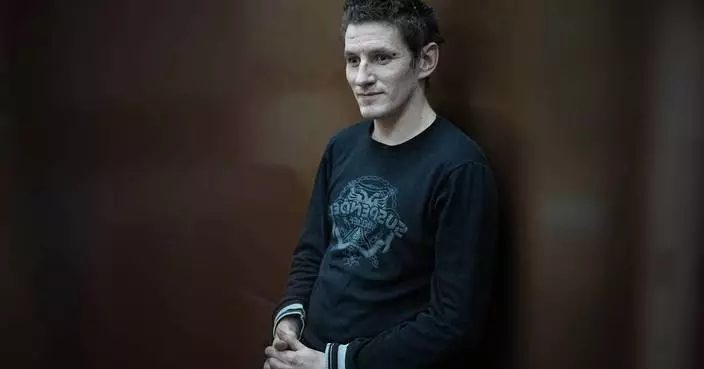What a spell for sentient toys. A week after the child-crafted plaything Forky found life in "Toy Story 4" and Chucky was reborn in "Child's Play," the evil vintage doll of the "Conjuring" spinoff series "Annabelle" is back, too, in "Annabelle Comes Home." Surely, a tea party must be in the offing.
If movie theaters are starting to feel as cluttered as a kid's play room, that pileup is nothing compared to the growing collection of movies from the extended Conjuring-verse. There have been eight films in the franchise in the last six years, with offshoots for "The Nun" and "The Curse of La Llorona." Demonic forces turn out to be like Russian dolls. Open one up and out tumbles a trilogy.
Almost as a rule, the "Conjuring" movies are slavishly devoted to horror clichés, and it can feel like they're simply going down a list: Creaking doors, check. Possessed playthings, check. Lots of crosses, check. How about a ghoulish bride? You got it. They collectively worship at the altar of William Friedkin's "The Exorcist," aping both its Catholic hokum and title font. These are proudly old-school movies composed of simple frights and legit craft.
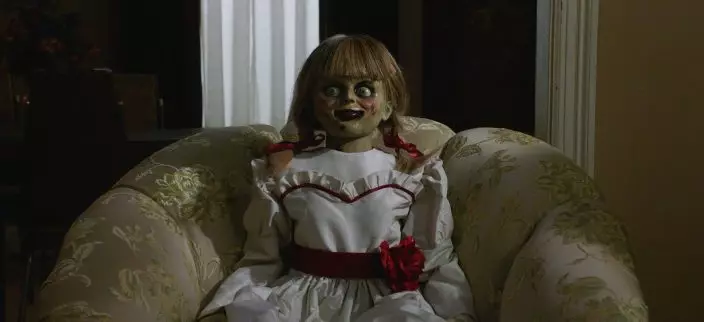
This image released by Warner Bros. Pictures shows a scene from the horror film, "Annabelle Comes Home." (Warner Bros. Pictures via AP)
They are also, for better or worse, almost comforting horror movies, safely sealed in a trope-filled movie world that doesn't, like Jordan Peele's films, claw at our own. That's especially true of screenwriter-turned-director Gary Dauberman's "Annabelle Comes Home," which echoes as much with sincerity as it does screaming. It's less scary than spooky, and you almost feel as though if these movies keep going, eventually Scooby and the gang are going to solve one of these mysteries.
But for now we still have the central demonologists of the movies, Ed and Lorraine Warren (Patrick Wilson and Vera Farmiga). They have a calming presence over the whole ordeal. So versed are they in the supernatural that they don't bat an eye when the clocks start speeding backward or the cemetery dead appear in their headlights.
That's more or less how "Annabelle Comes Home" begins. The Warrens are driving home when it dawns on them that the doll they've just acquired — which got not one but two origin stories in "Annabelle" and "Annabelle Creation" — is a kind of beacon for evil. When they get to their Connecticut split-level, they put Annabelle behind glass in their locked room of artifacts, a collection of so much haunted stuff that it's blessed weekly by a priest.
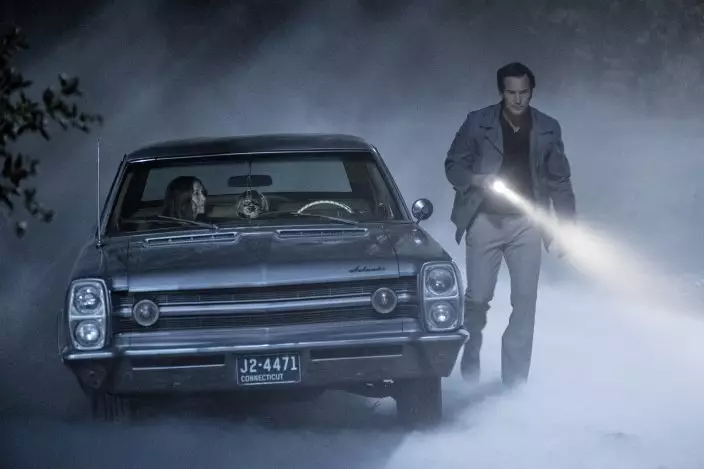
This image released by Warner Bros. Pictures shows Vera Farmiga, left, and patrick Wilson in a scene from the horror film, "Annabelle Comes Home." (Justin LubinWarner Bros. Pictures via AP)
But for much of "Annabelle Comes Home," Ed and Lorraine are out of town, leaving their 10-year-old daughter Judy (Mckenna Grace) in the hands of her teenage baby sitter Mary Ellen (Madison Iseman). Judy is a sweet young kid who has inherited some her mother's spirit senses but, due to her parents' reputation, is shunned by many of her classmates.
She and Mary Ellen are having a fine time together, but trouble comes in the form of Mary Ellen's friend, Daniela (Katie Sarife), who shows up uninvited and mischievously curious about the Warrens' work. She's also hiding her own grief, having recently lost her father in a car accident. Yearning for some connection to what's beyond the grave, she's drawn intractably to the locked room and, naturally, to Annabelle.
You can pretty much guess how things go from there. Pandora's box gets opened and the three girls suddenly find themselves in a haunted house teeming with all manner of terrors. Dauberman, making his directing debut after scripting the previous "Annabelle" films and the hit Stephen King adaptation "It," patiently lets things unspool, soaking up the night's dim and foggy atmosphere and the '70s wallpaper while steadily increasing the number of jump scares.
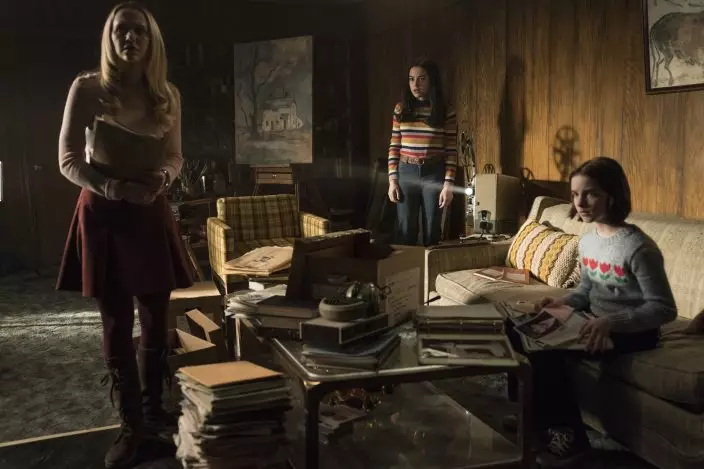
This image released by Warner Bros. Pictures shows Madison Iseman, from left, Katie Sarife and McKenna Grace in a scene from the horror film, "Annabelle Comes Home." (Dan McFaddenWarner Bros. Pictures via AP)
What makes "Annabelle Comes Home" rise above its well-trod narrative are the actresses and Dauberman's sensitive attention to each of them. Grace, in particular, is a standout with an obvious maturity beyond her years. And Sarife artfully combines a teenager's rebelliousness with heartache.
It's never much in doubt how things will turn out. The evil will, once again, be "contained." That's what makes "Annabelle Comes Home" and some of its "Conjuring" ilk oddly soothing. "All the evil in here reminds me of all the good out there," Lorraine says of the Warrens' room of artifacts. But she's also articulating the underlying heart and ethos of these horror films. I'm not so sure. Out here, it takes more than a display case and a prayer to lock evil away.
"Annabelle Comes Home," a Warner Bros. release, is rated R by the Motion Picture Association of America for horror violence and terror. Running time: 120 minutes. Two and a half stars out of four.
MPAA definition of R: Restricted. Under 17 requires accompanying parent or adult guardian.
Follow AP Film Writer Jake Coyle on Twitter at: http://twitter.com/jakecoyleAP
VENICE. Italy (AP) — Jeffrey Gibson’s takeover of the U.S. pavilion for this year’s Venice Biennale contemporary art show is a celebration of color, pattern and craft, which is immediately evident on approaching the bright red facade decorated by a colorful clash of geometry and a foreground dominated by a riot of gigantic red podiums.
Gibson, a Mississippi Choctaw with Cherokee descent, is the first Native American to represent the United States solo at the Venice Biennale, the world’s oldest contemporary art show. For context, the last time Native American artists were included was in 1932.
Gibson, 52, accepts the weight of the honor, but he prefers to focus on how his participation can forge greater inclusion going forward.
“The first is not the most important story," Gibson told The Associated Press this week before the pavilion’s inauguration on Thursday. “The first is hopefully the beginning of many, many, many more stories to come."
The commission, his first major show in Europe, comes at a pivotal moment for Gibson. His 2023 book “An Indigenous Present" features more than 60 Indigenous artists, and he has two major new projects, a facade commission for the Metropolitan Museum of Art in New York and an exhibition at the Massachusetts Museum of Contemporary Art.
Gibson’s eye-catching exhibition titled “the space in which to place me," features text in beadwork sculptures and paintings taken from U.S. founding documents, music, sermons and proverbs to remind the viewer of the broken promises of equity through U.S. history. The vibrant use of color projects optimism. In that way, Gibson’s art is a call to action.
“What I find so beautiful about Jeffrey’s work is its ability to function as a prism, to take the traumas of the past and the questions about identity and politics and refract them in such a way that things that realities that have become flattened … can become these beautiful kaleidoscopes, which are joyous and celebratory and critical all at the same time," said Abigail Winograd, one of the exhibition’s curators.
“When I see people walk through the pavilion and kind of gasp when they walk from room to room, that’s exactly what we wanted," Winograd said.
Entering the pavilion, the beaded bodices of sculptures in human form are emblazoned with dates of U.S. legislation that promised equity, the beading cascading into colorful fringe. A painting quotes George Washington writing, “Liberty, when it begins to take root, is a plant of rapid growth," in geometric letters that meld into a colorful patterned background.
By identifying specific moments in U.S. history, Gibson said that he wants to underline that “people who are fighting for equity and justice today, we’re not the first.
“This has been a line in the history of American culture. But I’m hoping that people will think about why … some of these things … have either been revoked or have not come into fruition,” he said.
Craft is at the center of Gibson’s art, both in defiance of past denigration of craft and as a way to confront “the traumatic histories of Native American people,” he said.
“There is something very healing about the cycle of making," Gibson explained.
The pavilion’s intricate beaded sculptures owe a debt to Native American makers of the past without imitating them, employing couture techniques to create something completely new. In the way of his forbears, Gibson uses beads sourced from all over the world, including vintage beads from Japan and China, and glass beads from the Venetian island of Murano.
Paper works incorporate vintage beadwork purchased from websites, estate and garage sales in mixed media displays that honor the generations of Native American makers that preceded him.
Gibson's themes fit well into the message of inclusion of the main Biennale exhibition, titled “Stranieri Ovunque -- Strangers Everywhere,” which runs in tandem with around 90 national pavilions from April 20-Nov. 24.
His personal history has placed him firmly in what he calls the “diasporic history of Indigenous people.” His father's job took his family abroad when he was a child to Germany and then South Korea, and he later studied in Chicago and London. His partner is Norwegian artist Rune Olsen.
Through all of this, Gibson has picked up traditions and practices that go beyond his Indigenous background.
“I’ve looked at op art, pattern and decoration. I've looked at psychedelia, I have taken part in rave culture and queer culture and drag and the whole spectrum," Gibson said.
"And so for me, I would not be telling you the whole truth if I only chose to spoke about indigeneity. But my body is an Indigenous body — it’s all funneled through this body,'' he said. ”And so my hope is that by telling my experience, that everyone else can project their own kind of intersected, layered experience into the world.”
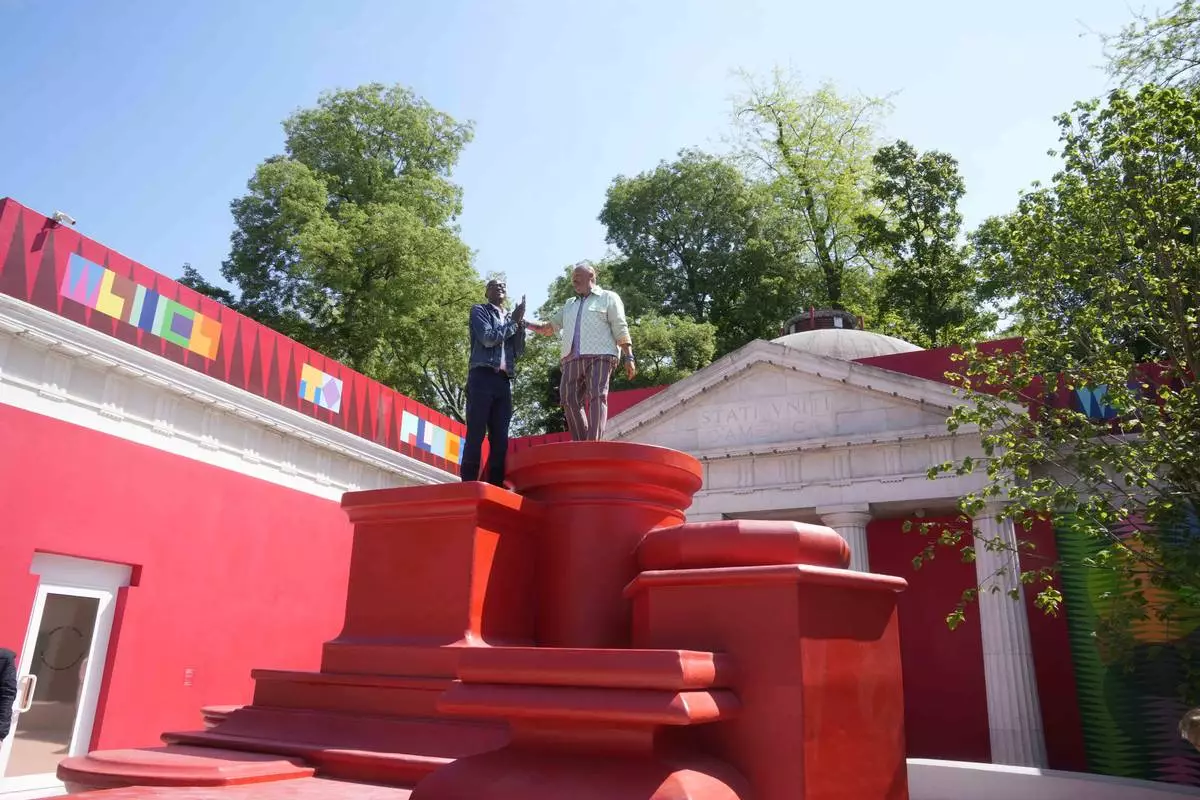
Artist Jeffrey Gibson, right, poses with artist Mark Bradford at the U.S. pavilion during the media open day at the 60th Biennale of Arts in Venice, Italy, Tuesday, April 16, 2024. A Mississippi Choctaw of Cherokee descent, Gibson is the first Native American to represent the United States solo at the Venice Biennale, the world’s oldest contemporary art show. Gibson mixes Western modernism and Native American craft in his vibrantly hued paintings and sculptures. (AP Photo/Luca Bruno)
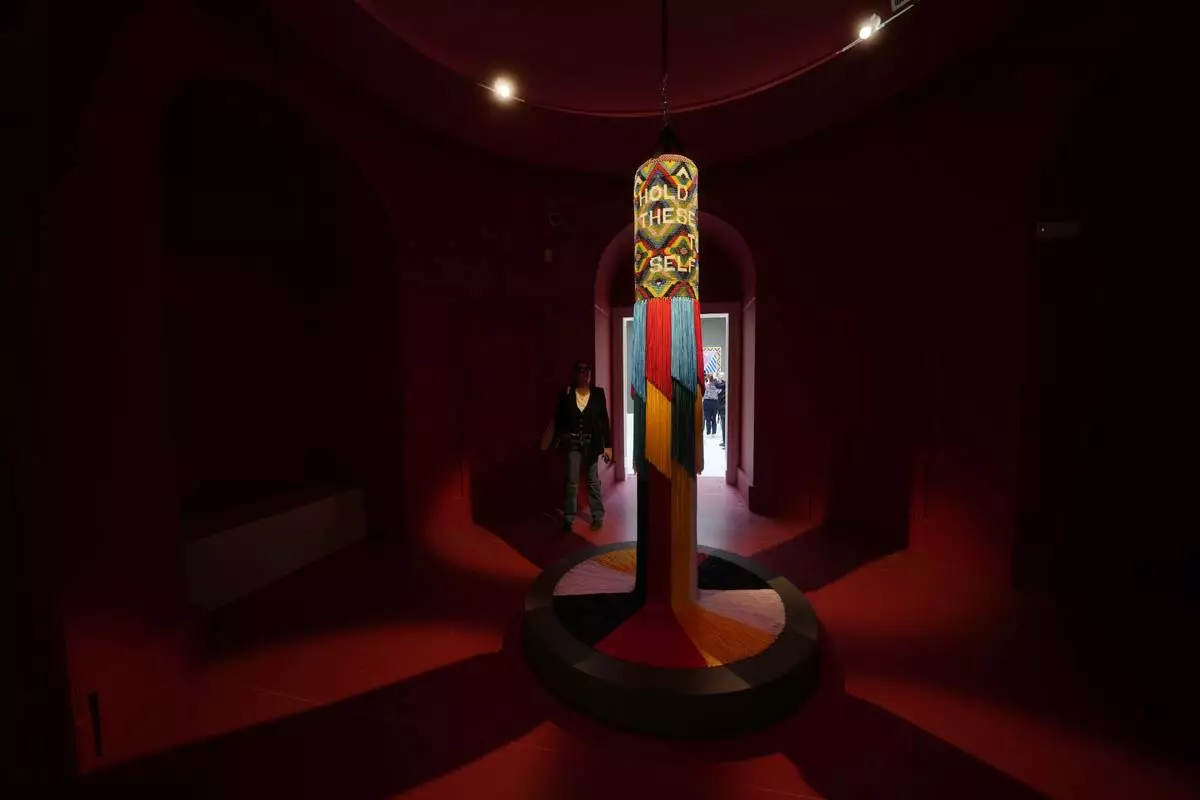
Visitors look at sculptures on display inside the US pavilion by artist Jeffrey Gibson during the 60th Biennale of Arts in Venice, Italy, Tuesday, April 16, 2024. A Mississippi Choctaw of Cherokee descent, Gibson is the first Native American to represent the United States solo at the Venice Biennale, the world’s oldest contemporary art show. Gibson mixes Western modernism and Native American craft in his vibrantly hued paintings and sculptures. (AP Photo/Luca Bruno)
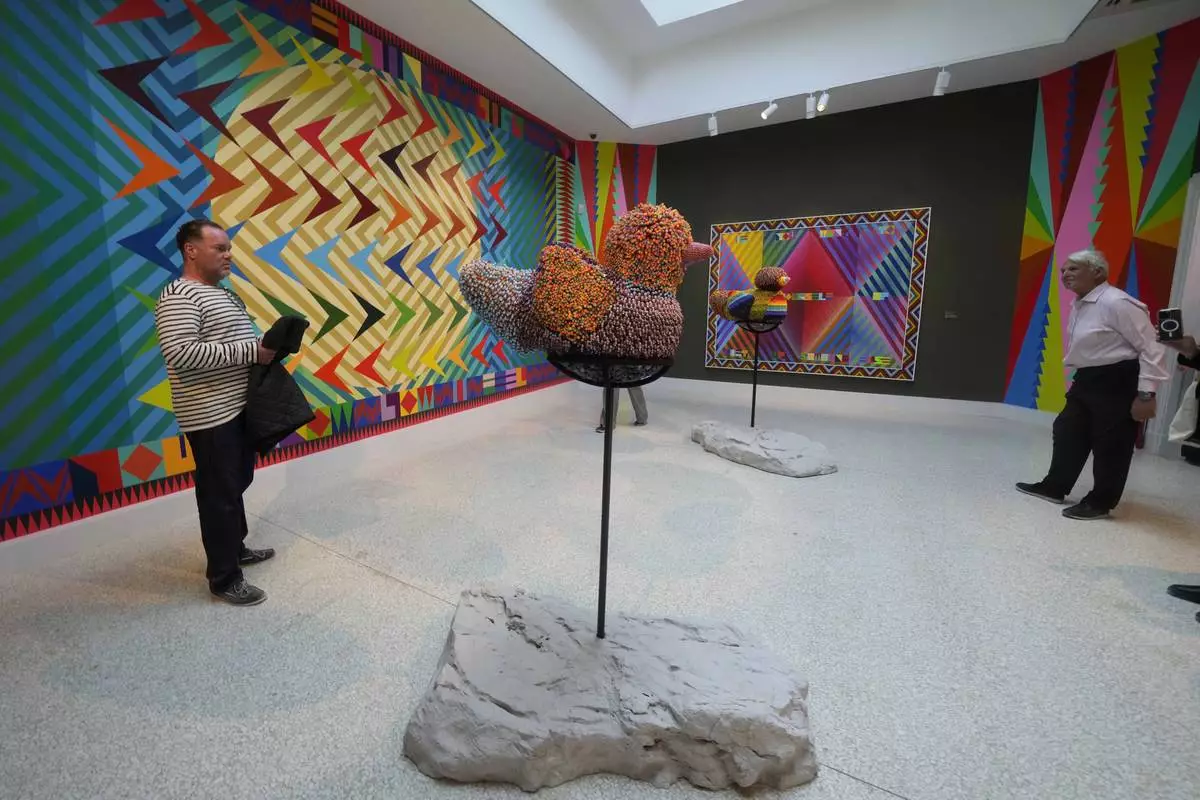
Visitors look at sculptures on display inside the US pavilion by artist Jeffrey Gibson during the 60th Biennale of Arts in Venice, Italy, Tuesday, April 16, 2024. A Mississippi Choctaw of Cherokee descent, Gibson is the first Native American to represent the United States solo at the Venice Biennale, the world’s oldest contemporary art show. Gibson mixes Western modernism and Native American craft in his vibrantly hued paintings and sculptures. (AP Photo/Luca Bruno)

Visitors look at sculptures on display inside the US pavilion by artist Jeffrey Gibson during the 60th Biennale of Arts in Venice, Italy, Tuesday, April 16, 2024. A Mississippi Choctaw of Cherokee descent, Gibson is the first Native American to represent the United States solo at the Venice Biennale, the world’s oldest contemporary art show. Gibson mixes Western modernism and Native American craft in his vibrantly hued paintings and sculptures. (AP Photo/Luca Bruno)

Visitors look at sculptures on display inside the US pavilion by artist Jeffrey Gibson during the 60th Biennale of Arts in Venice, Italy, Tuesday, April 16, 2024. A Mississippi Choctaw of Cherokee descent, Gibson is the first Native American to represent the United States solo at the Venice Biennale, the world’s oldest contemporary art show. Gibson mixes Western modernism and Native American craft in his vibrantly hued paintings and sculptures. (AP Photo/Luca Bruno)
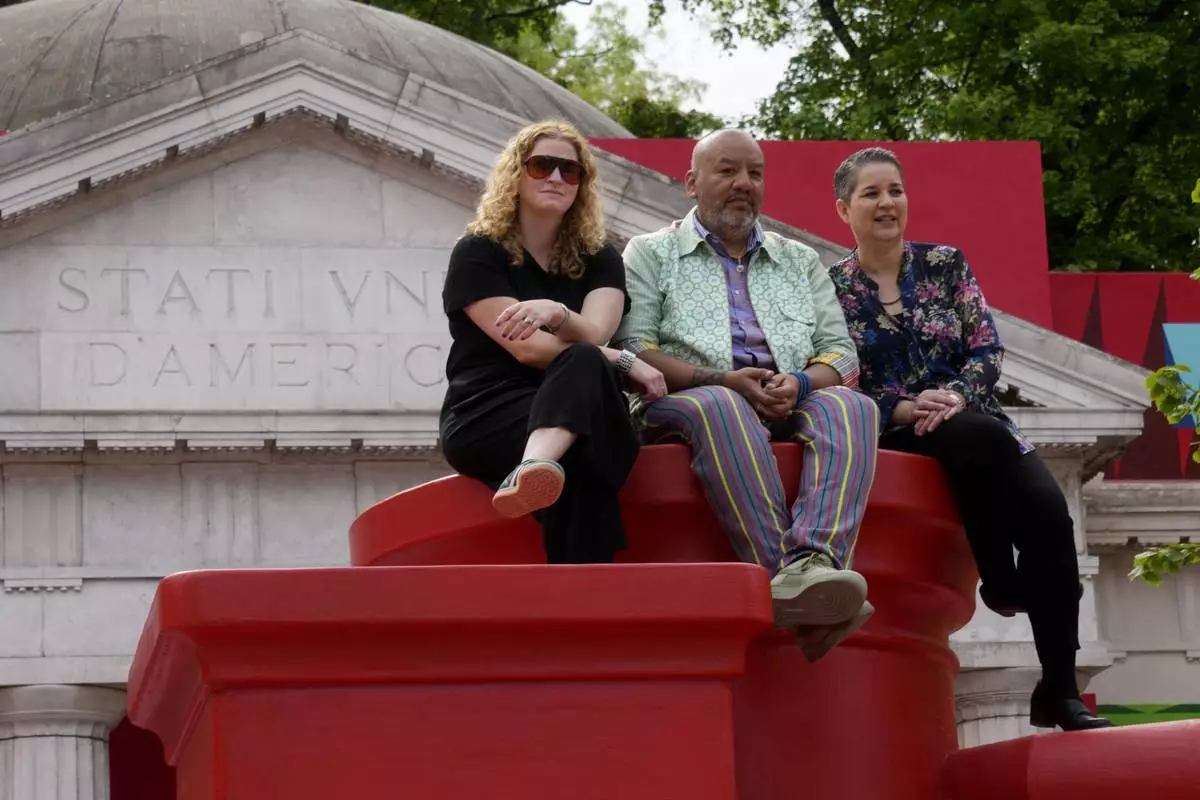
From left, Curator Abigail Winograd, artist Jeffrey Gibson, and Curator Kathleen Ash-Milby pose at the US pavilion during the media open day at the 60th Biennale of Arts in Venice, Italy, Tuesday, April 16, 2024. A Mississippi Choctaw of Cherokee descent, Gibson is the first Native American to represent the United States solo at the Venice Biennale, the world’s oldest contemporary art show. Gibson mixes Western modernism and Native American craft in his vibrantly hued paintings and sculptures. (AP Photo/Luca Bruno)
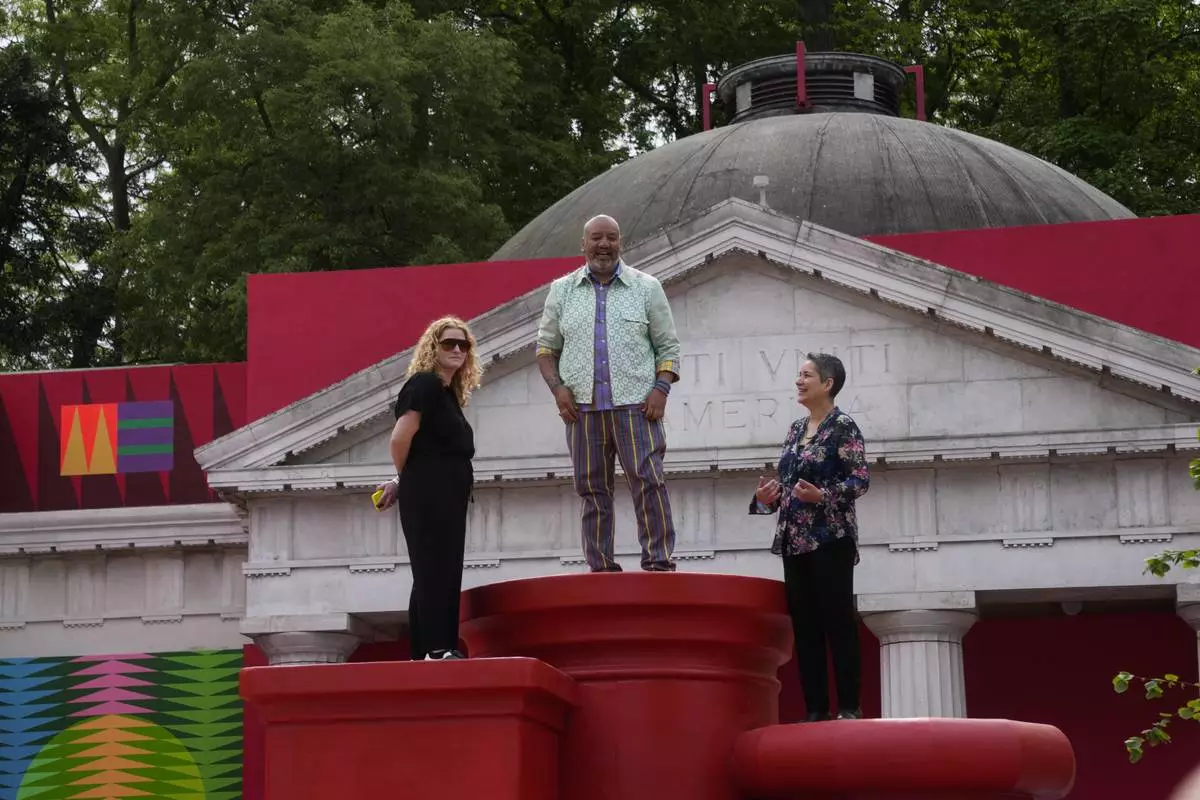
From left, Curator Abigail Winograd, artist Jeffrey Gibson, and Curator Kathleen Ash-Milby pose at the US pavilion during the media open day at the 60th Biennale of Arts in Venice, Italy, Tuesday, April 16, 2024. A Mississippi Choctaw of Cherokee descent, Gibson is the first Native American to represent the United States solo at the Venice Biennale, the world’s oldest contemporary art show. Gibson mixes Western modernism and Native American craft in his vibrantly hued paintings and sculptures. (AP Photo/Luca Bruno)
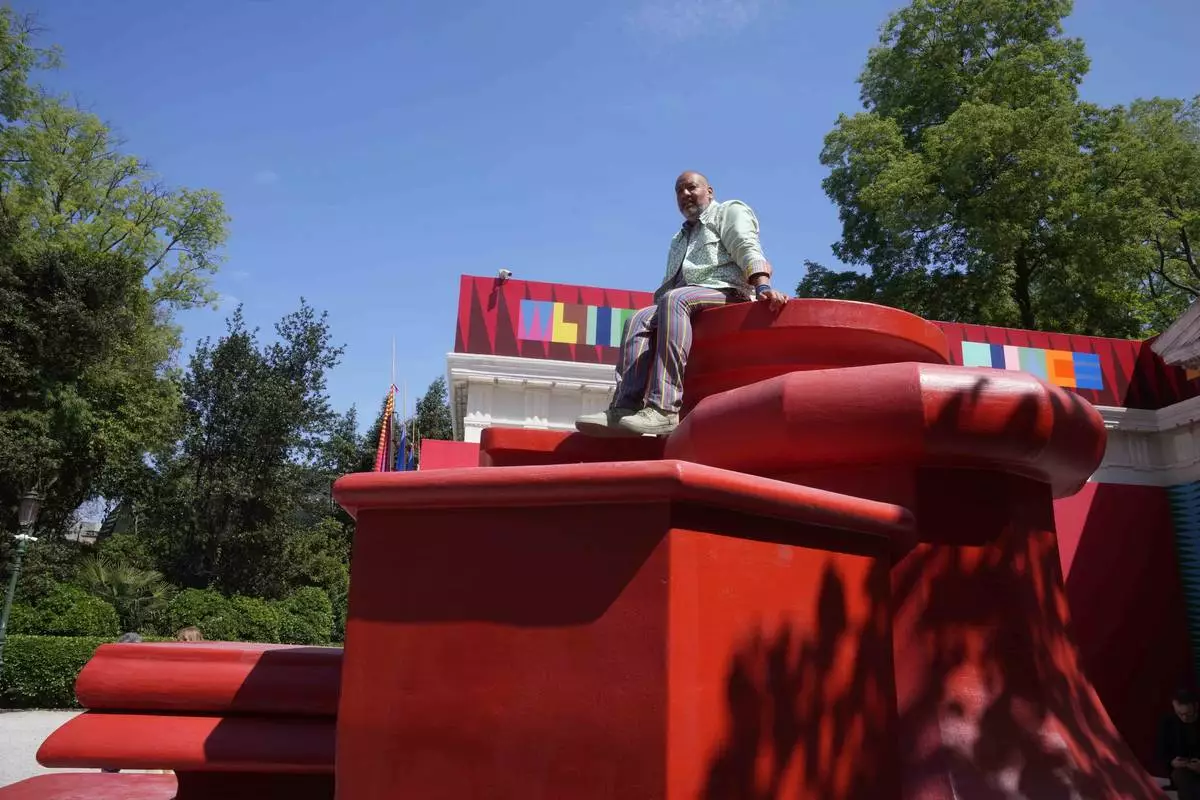
Artist Jeffrey Gibson poses at the US pavilion during a media open day at the 60th Biennale of Arts in Venice, Italy, Tuesday, April 16, 2024. A Mississippi Choctaw of Cherokee descent, Gibson is the first Native American to represent the United States solo at the Venice Biennale, the world’s oldest contemporary art show. Gibson mixes Western modernism and Native American craft in his vibrantly hued paintings and sculptures. (AP Photo/Luca Bruno)
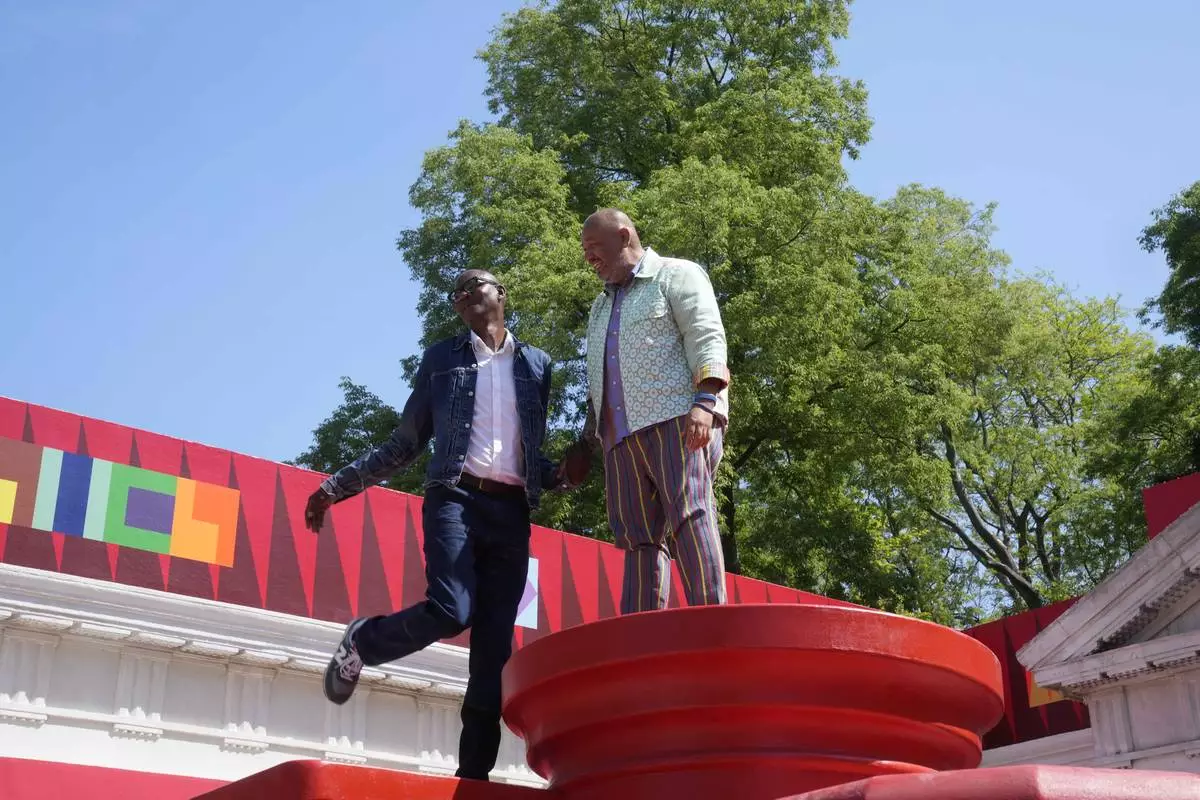
Artist Jeffrey Gibson, right, poses with artist Mark Bradford at the U.S. pavilion during the media open day at the 60th Biennale of Arts in Venice, Italy, Tuesday, April 16, 2024. A Mississippi Choctaw of Cherokee descent, Gibson is the first Native American to represent the United States solo at the Venice Biennale, the world’s oldest contemporary art show. Gibson mixes Western modernism and Native American craft in his vibrantly hued paintings and sculptures. (AP Photo/Luca Bruno)
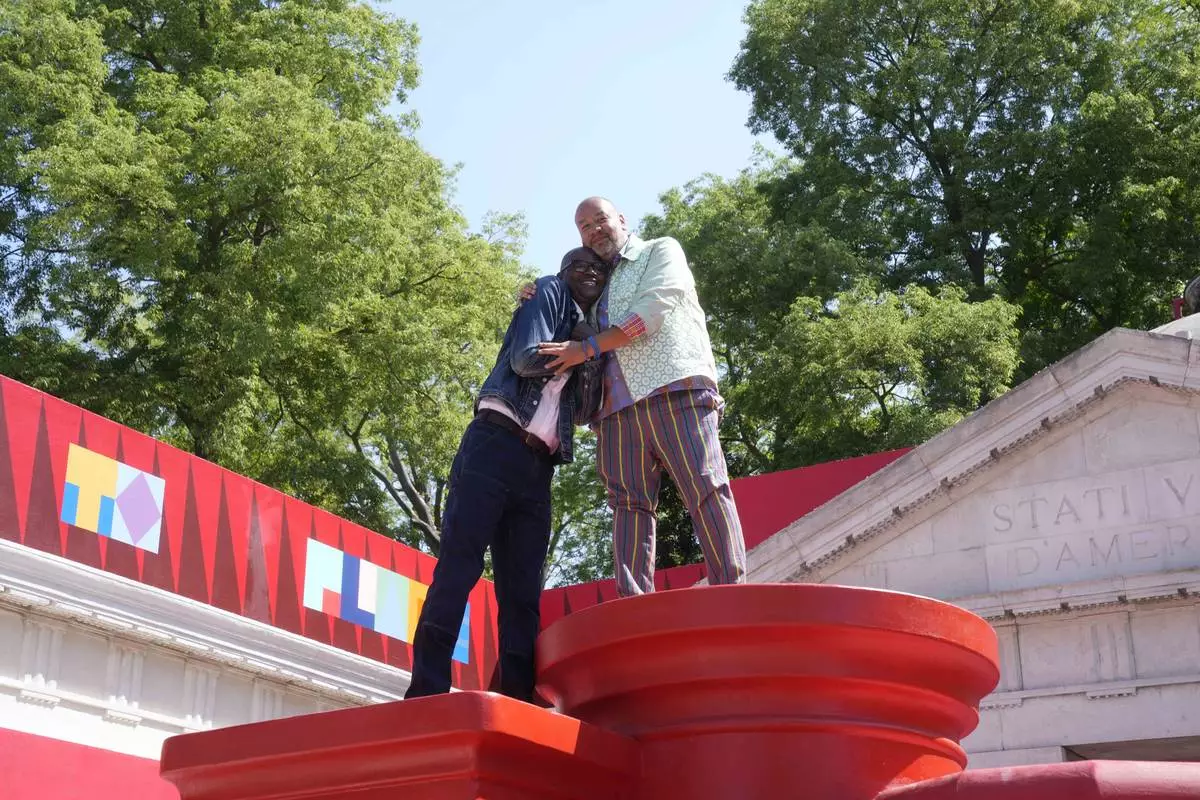
Artist Jeffrey Gibson, right, hugs artist Mark Bradford at the U.S. pavilion during media open day of the 60th Biennale of Arts exhibition in Venice, Italy, Tuesday, April 16, 2024. A Mississippi Choctaw of Cherokee descent, Gibson is the first Native American to represent the United States solo at the Venice Biennale, the world’s oldest contemporary art show. Gibson mixes Western modernism and Native American craft in his vibrantly hued paintings and sculptures. (AP Photo/Luca Bruno)
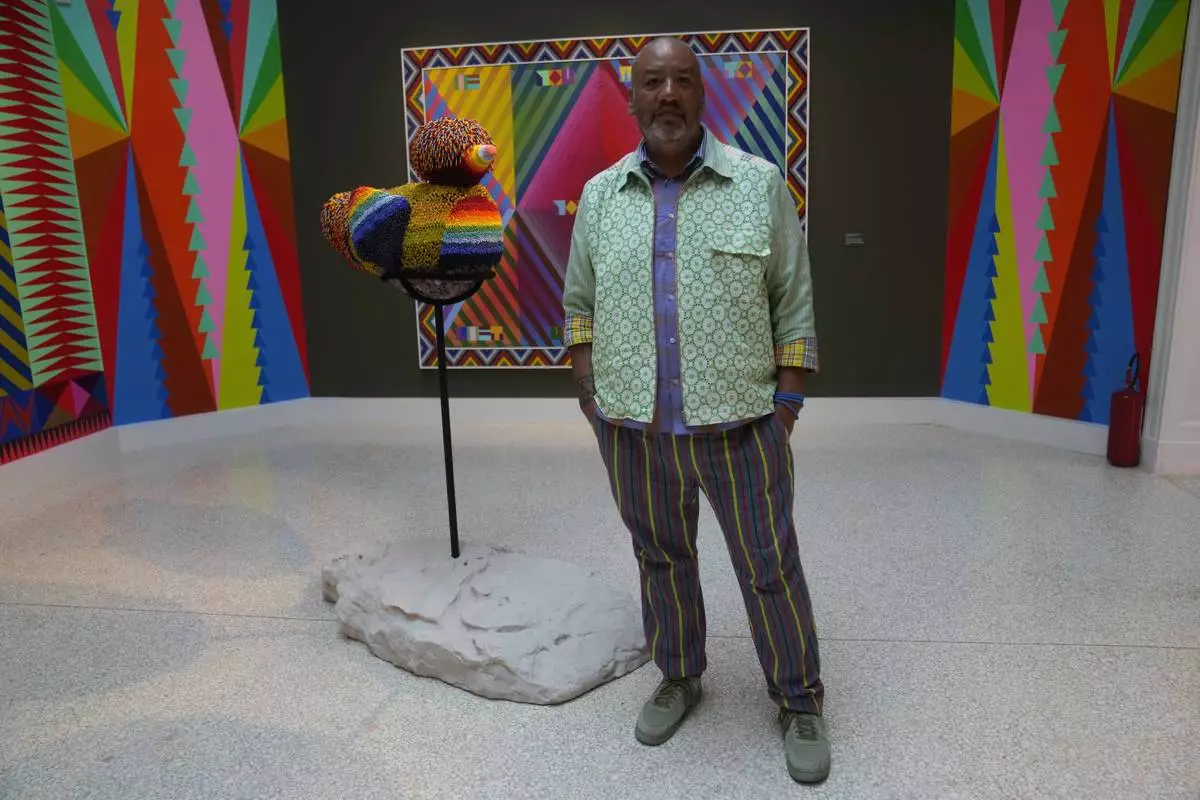
Artist Jeffrey Gibson poses inside the US pavilion during the media open day at the 60th Biennale of Arts in Venice, Italy, Tuesday, April 16, 2024. A Mississippi Choctaw of Cherokee descent, Gibson is the first Native American to represent the United States solo at the Venice Biennale, the world’s oldest contemporary art show. Gibson mixes Western modernism and Native American craft in his vibrantly hued paintings and sculptures. (AP Photo/Luca Bruno)






















